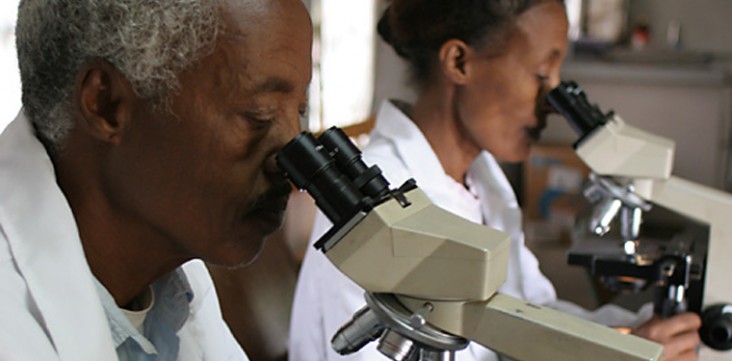
Engaging the world is critical in the quest for solutions to achieve breakthrough progress in development.
The international development landscape is changing to include many more participants, “solution holders” and willing collaborators than ever before. USAID encourages the academic, scientific and entrepreneurial communities to pioneer solutions to the most challenging development problems. USAID is open to ideas from anyone passionate about finding innovative solutions to achieve development goals and recognizes that development breakthroughs can come from anyone:
Related Links:
Development Innovation Ventures
Grand Challenges for Development
Higher Education Solutions Network
LAUNCH
Partnerships for Enhanced Engagement in Research (PEER)
Science, Technology and Innovation at USAID
Mobile Solutions at USAID
See Also:
Business Forecast
Data and Analytics for Development
Partnerships with Federal Science Agencies
Training on How to Work with USAID
- Researchers or students in universities
- Scientists and engineers working in the public and private sectors
- Individuals or organizations that have deep contextual knowledge of a region’s specific needs and have creative solutions to the challenges
- Entrepreneurs with bold ideas
Global development solutions cannot be catalyzed and brought to scale until experienced scientists and engineers, researchers and students, private entrepreneurs, teachers in academic institutions and development experts are connected, focused, and engaged with each other and systematically share knowledge and resources to achieve specific outcomes. USAID is engaging with these communities by:
- Spurring open innovation through global competitions such as Grand Challenges for Development and other prize competitions;
- Supporting transformational and collaborative research;
- Uncovering innovative ideas and multi-disciplinary approaches for more effective development by engaging with higher education communities around the globe;
- Using a venture capital style fund, Development Innovation Ventures (DIV) tests cost effective, scalable ideas in any sector and any country in which USAID operates; and
- Leveraging the power and reach of mobile technology to accelerate social and economic development.
For example:
- Our Saving Lives at Birth Grand Challenge has already sourced a number of innovations designed to save mothers and babies in the critical hours around birth, including a suitcase-like device that provides solar power to clinics where electricity is scarce and a foil pouch that delivers critical medication for HIV prevention.
- Our LAUNCH partnership with NASA, the Department of State, and NIKE identifies visionaries, like Gram Power, an Indian company using “smart” micro-grid technology to provide electricity to poor rural villages with no access to power.
- Through our Higher Education Solutions Network, the College of William and Mary is building a world-class research consortium that will use geospatial and other forms of data to help USAID and other stakeholders make evidence-based policy and resource allocation decisions.
- Through DIV, we are investing in an innovative social enterprise to build and franchise sanitation centers. Designed by MIT engineers and architects, these low-cost, modular hygienic latrines can be used to collect waste and process it as fertilizer and biogas.
Please contact us for more information.







Comment
Make a general inquiry or suggest an improvement.